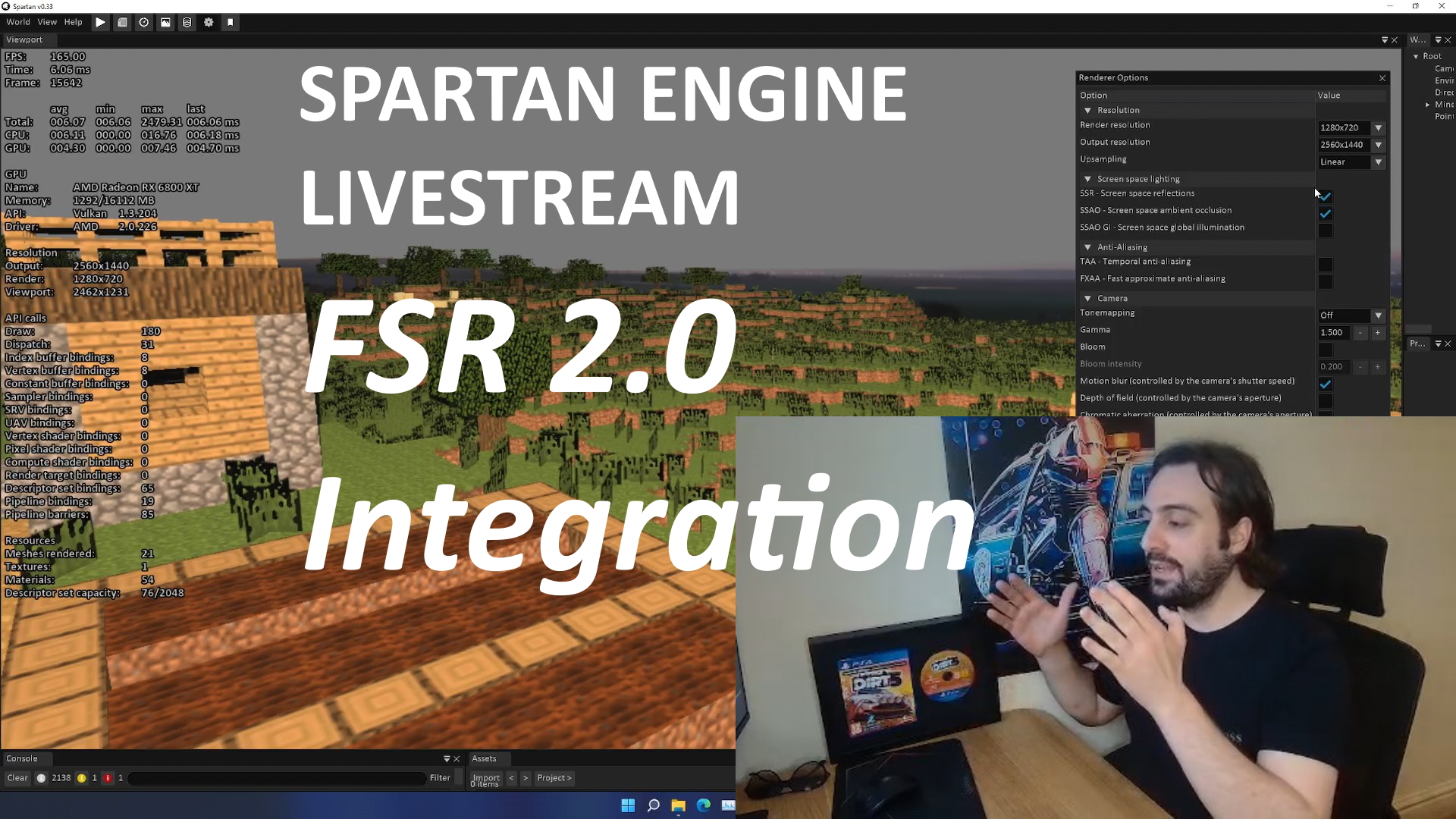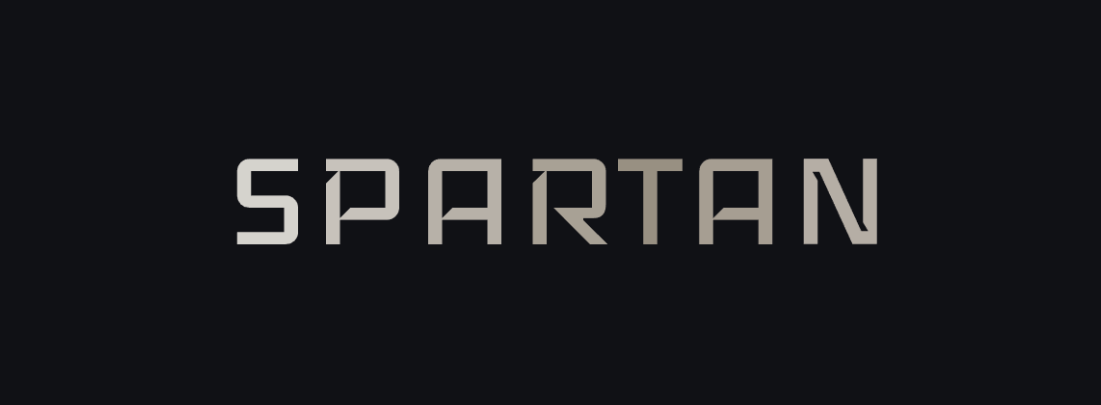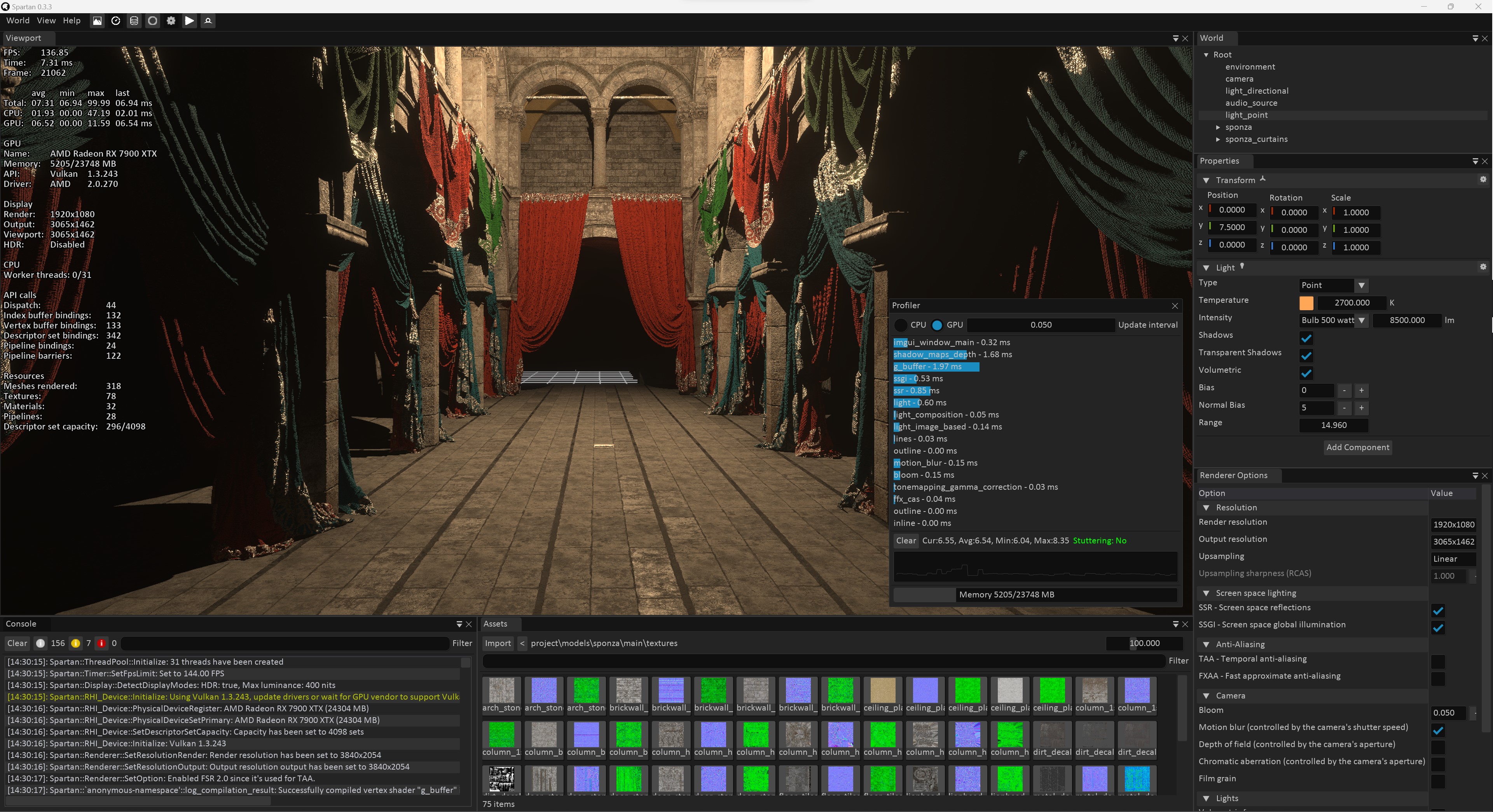Spartan Engine is more than an engine; it's a vibrant hub for learning and connection, redefining the open-source community experience. While centered around a research-focused game engine for real-time solutions, our core mission is to foster a unique, collaborative environment. Join us for exclusive perks like contributor recognition, networking opportunities with tech professionals, and valuable learning resources, including our active Discord community and insightful YouTube tutorials. Spartan Engine isn't just about code; it's about building a community like no other.
-
For occasional updates regarding the project's development, you can follow me on twitter.
-
For questions, suggestions, help and any kind of general discussion join the discord server.
-
For issues and anything directly related to the project, feel free to open an issue.
-
Meet my AI replica, equipped with Spartan Engine knowledge and my personality traits, ready to assist you. Interact with it here.
-
Please adhere to the MIT license You're free to copy the code, provided you include the original license.
| Video: Livestream of FSR 2 integration | Video: A demonstration of the engine's capabilities (old) |
|---|---|
 |
 |
| Screenshot: Bistro | Screenshot: Minecraft |
 |
 |
Upon launching the engine, you'll be greeted with a selection of default worlds to load. Each world is physics-enabled, allowing you to walk around, pick objects using your mouse, and even drive a car. These worlds are designed to offer a diverse and enjoyable experience.
- 128-byte push constant buffer for lightning fast CPU to GPU data transfer.
- On the fly GPU-based mip generation - with only one dispatch.
- Unified deferred rendering with transparency (BSDF with same render path).
- Vulkan and DirectX 12 (WIP) backends with universal HLSL shaders.
- Screen space shadows from Bend Studio's Days Gone.
- Screen space global illumination, reflections.
- Advanced shadow features with penumbra and colored translucency.
- Physical light units (intensity from lumens and color from kelvin).
- Comprehensive debug rendering options.
- Frustum culling.
- Physically based camera.
- Atmospheric scattering.
- Temporal anti-aliasing for smooth visuals.
- Post-process effects like fxaa, bloom, motion-blur, depth of field, chromatic aberration etc.
- AMD FidelityFX features like FSR 2, SPD, etc.
- One-click project generation for easy setup.
- Universal input support, including mouse, keyboard, and controllers (tested with a PS5 controller).
- Comprehensive physics features.
- CPU & GPU profiling.
- XML support for data handling.
- Thread pool for that can consume any workload.
- Entity-component, event systems and most things you'll expect to find in a modern engine.
- Wide file format support: 10+ for fonts, 20+ for audio, 30+ for images, and 40+ for models.
- Continue switching to bindless.
- Skeletal Animation.
- Eye Adaptation.
- Subsurface scattering.
- Ray traced reflections & shadows.
- Dynamic resolution scaling (and use FSR 2, to properly reconstuct).
- Scripting.
- Export on Windows.
- Improved the editor style/theme.
- Continue work on D3D12 (low priority since Vulkan is there).
- Linux port (low priority since the target audience is small).
If you are looking at what to do, there are more ideas in the issues section.
Don't forget that there is a wiki that can help answer some of your questions. Here are some of it's contents:
- This engine started as a way to enrich my portfolio while I was a university student, circa 2015.
- It's one of the oldest, yet still active, one man game engines on GitHub.
- It's one of the most rewarding projects in terms of the perks you receive should you become a contributor, more here.
Are you utilizing any components from the Spartan Engine, or has it inspired aspects of your work? If yes, then reach out to me, I'd love to showcase your project.
- Godot uses Spartan's TAA, see here






